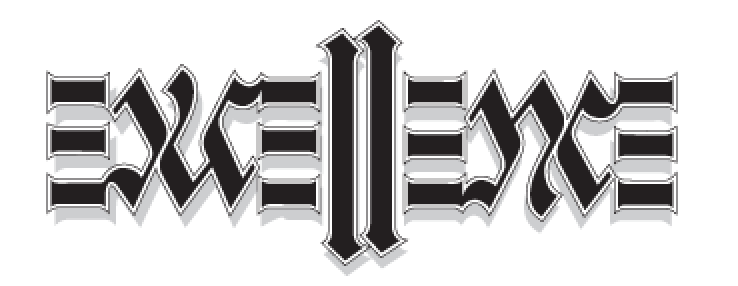While there is no recipe for assuring long term excellence, there are certain business practices that can enhance the chances for achieving and sustaining such aspiration. ASQ’s Influential Voices topic for this month is “Sustaining Excellence for the Long Term”. The first question that arises is: What is excellence? The Oxford Dictionary online edition defines it as “the quality of being outstanding or extremely good” from the Latin excellentia, and from the verb excellere “surpass”.
Excellence an ambigram by John Langdon.
Turn it upside down and see what happens
When I teach ASQ’s CMQ/OE certification (Certified Manager of Quality and Organizational Excellence) I like to tell my students that the organization of the BoK (Body of Knowledge) is precisely the way excellence should flow in a company. The main elements of the CMQ/OE body of knowledge are:
- Leadership
- Strategic plan development and deployment
- Management elements and methods
- Quality management tools
- Customer focused organizations
- Supply chain management
- Training and development
LEADERSHIP & STRATEGIC DEVELOPMENT AND DEPLOYMENT
An excellent company starts with leaders who actually want to be excellent. They know who they are, how they fit into the company’s culture, how they communicate and what they communicate. They are responsible of what Pat Lencioni, one of the great business thinkers of our times, calls “Organizational Health”.
Leaders are in charge of change, and only the right changes at the right time will keep any business going.
Leaders are also in charge of motivating their people. Let me quote Ishikawa on the importance of motivation: “In management, the first concern of the company is the happiness of people who are connected with it. If the people do not feel happy and cannot be made happy, that company does not deserve to exist”.
Leaders guide their people and provide the environment for teamwork.
Strategic development and deployment is also a leadership role. Leaders provide clarity, communicate clarity and reinforce clarity as Lencioni would say.
If excellence is not part of the strategic plan and leaders don’t reinforce it, then no one is morally required to pursue it.
MANAGEMENT ELEMENTS, METHODS AND QUALITY MANAGEMENT TOOLS
Once the example is set, there is clarity, and there is a good work environment, the next step is to translate those elements into an excellent day to day operation. All areas have to function organically as one being. All departments and functional areas need to function interdependently as one body. Day to day communication is essential.
Great quality and project management are main elements of any great company. Quality models such as the Malcolm Baldrige award or the EFQM Model, plus many local state or national quality awards, are a great source of operational excellence models.
Continuous improvement and innovation are also part of any excellent organization. Included are: basic quality and management tools; PDCA; Lean and Six Sigma; Innovation and Creativity Tools including Lateral Thinking, Triz, Design Thinking and; also Cost of Quality. Top managers should know their role in these and other tools.
Metrics, data and an effective use of statistics complete this part.
CUSTOMER FOCUS, SUPPLY CHAIN
Everything we do, we do it with the customer in mind. And, on the other hand, not only are we interdependent within the business but also outside the company. This Interdependent ecosystem includes every stakeholder from our suppliers to our customers. Excellence involves and benefits our vendors and is reflected in our customers.
TRAINING AND DEVELOPMENT
Think of Training and Development as the icing on the cake for excellence. Training should be aligned with the strategic plan, and with the needs that arise as the company changes and improves over time. All management levels should be part of training and development, top executives included. Training effectiveness and evaluation is of the most importance. Assessment models such as Kirkpatrick Four Levels are needed to properly measure the value of training.
As I said at the beginning, there are no recipes for sustaining excellence, but for companies all over the world this is a starting model to pursue excellence and perfection. All responsibility rests on top management’s commitment and habit for excellence. It was Stephen Covey who said “the main thing is to keep the main thing the main thing”, and the main thing is without any doubt Excellence.





